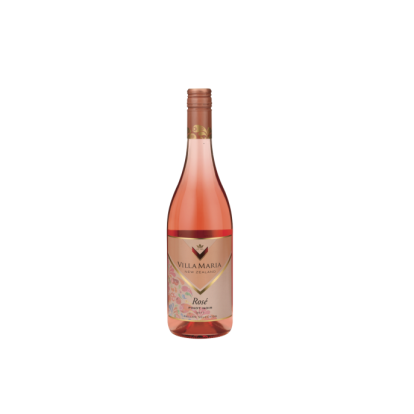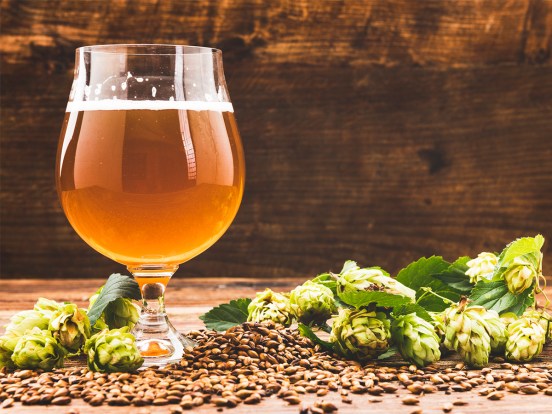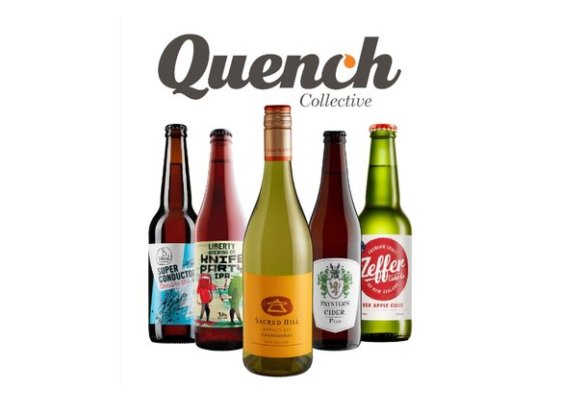By Charlotte Cowan
Dry July is here! And while it’s a great time for consumers to take a break from drinking and raise money for a good cause, it’s not such a great time for on-premise sales.
But, as opposed to 10 or even five years ago, there are so many no-alcohol options (and marketing opportunities) for you to maintain your sales goals during the month.
The no-alcohol trend
According to global liquor analysts, IWSR, the no-alcohol category grew at a volume CAGR of +8% between 2019 and 2023, and it is continuing to attract new recruits.
No-alcohol now accounts for two-thirds of no/low-alcohol category volumes, with 72% of that made up of beer/cider. No-alcohol continues to take share from traditional alcohol, and IWSR expects no-alcohol to command nearly 4% of TBA volumes across the T10 markets by 2027.
“An increasing consumer focus on moderation, health and wellness is having a positive impact on all no-alcohol sub-categories, with growth rates higher than their full-strength equivalents,” says Susie Goldspink, Head of No- and Low-Alcohol Insights, IWSR.
No-alcohol beer remains notably larger than other sub-categories, thanks to the relative maturity of the segment, availability of good tasting quality products, and the ongoing introduction of new brands from large and small breweries.
Meanwhile, alcohol-free RTDs have the smallest volumes, giving them the highest growth rates, primarily propelled by the demand for pre-mixed no-alcohol cocktails and the launch of new no-alcohol “hard” seltzers from some brands.
“Leading spirits brands are becoming more involved in no-alcohol, suggesting the segment is reaching an increasing level of maturity. New brands have also entered the segment, providing more options for consumers,” says Marten Lodewijks, Head of US Operations, IWSR.
In New Zealand, according to Statista, the Non-Alcoholic Drinks market is expected to show a volume growth of 1.3% in 2025.
In the off-premise, a typical liquor store will stock more than 30 no-alcohol wine, beer, spirits and RTD options and the number is growing every day.
While this is good news for the off-premise in Dry July, how can the on-premise capitilise as well?
No-alcohol cost vs alcoholic
The biggest misconception around non-alcoholic drinks is that without the alcohol, they should be exponentially cheaper.
But as most liquor business and consumers would have noticed, no-alcohol drinks cost just as much, if not more, than their alcoholic counterparts. Why?
“Non-alcoholic drinks and mocktails cost more because crafters often use greater quantities of high-quality ingredients and rely on complex formulas and production processes to match the aroma, flavour, and mouthfeel of traditional alcoholic drinks,” says craftybartending.com.
“It may seem like producers are simply charging high prices for non-alcoholic drinks to build brand value. However, there’s more than meets the eye to why manufacturers and bars charge prices that replicate, and often exceed, what traditional cocktails and spirits would cost.”
According to Crafty Bartending, ethanol, the chemical composition of alcohol, has the upper hand compared to water when capturing aromatic and flavour compounds.
“Alcohol serves as an excellent base for extracting and retaining flavours of herbs, spices, and botanicals.
“However, when infused in water, the aroma compounds don’t diffuse as well as in alcohol. To solve this issue, producers use four to 10 times the amount of herbs, spices, and botanicals to match the flavour of alcoholic beverages.”
The cost ingredients, not to mention the production process to remove the alcohol, plus marketing costs, all add up. So while it may seem like an easy process to produce a no-alcohol spirit, the opposite is in fact true.
Topping up your stock
With the cost of no-alcohol drinks pretty much comparable to alcoholic options, many bars and clubs will opt for a small number of no-alcohol options on their drinks menu to keep costs down.
And while this may work for your bottom line 11 months of the year, Dry July is the one month you should stock up on the 0% choices.
While these beverages come at a similar price point to their alcoholic counterparts to you, they also come at a cost to the consumer, allowing you to maintain your revenue streams.
When choosing your stock options, make sure you develop a comprehensive menu featuring no-alcohol beers, wines, spirits and RTDs.
Some choices to consider:
Beer & cider…
Heineken 0.0
Asahi Dry Zero
Peroni Nastro Azzurro 0.0%
Mac’s Freeride Pale Ale
Garage Project Tiny 0% Hazy IPA
Bach Brewing All Day Hazy IPA
Sawmill Bare Beer
Behemoth Responsibly Non-Alcoholic Hazy IPA
Zeffer 0%
Morningcider 0%
Good George Non-Alcoholic Doris Plum Cider
Wine…
Ara Zero
Lyre’s Classico Grande Sparkling
Giesen 0%
Brown Brothers Prosecco Zero
Lindauer Free
Spirits…
Seedlip
Lyre’s
Ecology & Co
Gordon’s 0.0%
Tanqueray 0%
Terps & Co
RTDs…
Pals 0%
Lyre’s
Elta Ego
AF Drinks
Finery
Showcasing inclusivity
By offering a wide range of no-alcohol options in your on-premise, you are highlighting your differential as a progressive and inclusive venue that caters to all preferences and values your alcohol-free customers.
Heather Garland, co-owner of popular Auckland bars Caretaker, Deadshot and Rocketman, says their venues do often have a few quieter than usual weeks during July, particularly on week days, but she believes that the real purpose of bars is social connection.
“People who don’t drink shouldn’t be excluded,” she tells The Shout NZ. “Having tasty, interesting options for everyone helps them feel welcome and included.”
Educating your bartenders
While the word “mixologist” is usually associated with alcoholic cocktails, make sure to train and educate your on-premise staff about creating delicious and innovative no-alcohol cocktails (aka mocktails).
Conduct training sessions to familiarise your bartenders with the non-alcoholic menu and educate them on the ingredients and flavour profiles.
Challenge your bartenders to create a no-alcohol cocktail menu using fresh ingredients, unique garnishes, and imaginative presentations to make them drinks just as appealing as their alcoholic counterparts.
“The people who aren’t drinking are more likely to want something interesting like non-alcoholic cocktails rather than settling for a soda or orange juice,” says Heather Garland.
“Most cocktails can be made as non-alcoholic cocktails so there is loads of room to get creative.
“As with all cocktails, the use of fresh seasonal fruit and produce over bottled juice makes a huge difference to flavour,” she says.
It’s also important that the staff is actively recommends these options, as their enthusiasm can significantly influence customer choices.

Heather Garland’s Milk Maid (no-alcohol version)
1 1/2 oz fresh-pressed Granny Smith apple juice
3 slices of cucumber
3/4 oz fresh lime
3/4 oz coconut cream
1/2 oz sugar syrup
Sprinkle of salt or dash of saline
Muddle the cucumber, shake rest of ingredients and strain over ice. Garnish with cucumber.
Run promotions
To encourage consumers to keep coming to your venue during Dry July, try running dedicated Dry July promotions for your customers or loyalty programme members.
Offer discounts on no-alcohol drinks or create happy hour specials that feature a selection of no-alcohol drinks and cocktails.
And even better, offer free post-mix soft drinks and bar snack discounts for Dry July participants (or sober drivers). They may not drink alcohol, but they’ll most likely order some food, which is good for revenue.
Get marketing!
Dry July provides a perfect marketing opportunity for your bar or on-premise venue.
Promote your no-alcohol drinks on social media, your website, and through in-bar advertising.
Special events, such as no-alcohol cocktail masterclasses or no-alcohol tasting nights, can draw in customers.
Utilise Dry July as a platform to engage with your audience and highlight your bar’s commitment to innovative, inclusive drinking options.
Dry July 2024
This year, funds raised from Dry July will go to three charities:
Look Good Feel Better (LGFB)
Prostate Cancer Foundation New Zealand (PCFNZ)
PINC & STEEL Cancer Rehabilitation Foundation (PNS)
Visit www.dryjuly.co.nz for more info.
How to catch up with The Shout NZ…
Online, updated daily with its own unique content and breaking news.
Our weekly newsletter – free to your inbox! Subscribe here.
We are also on Facebook and Instagram!





